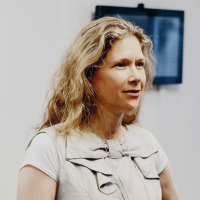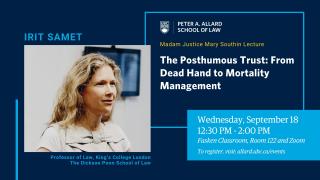The Posthumous Trust: From Dead Hand to Mortality Management
Ownership ceases with death. Like all powers – to vote, enter a contract or marry, the power to exert private control over property dies with the owner. This truism, however did, never stopped owners from trying to influence (or dictate) the afterlife of their property. In allowing trusts to operate after the final departure of the settlor, equity provides them with a most powerful tool for satisfying such hopes. The way in which the trustee must follow the deceased settlor’s wishes triggers a unique and serious ‘dead hand’ problem. For while heirs receive that share of the estate the legator chose to bequeath to them (in CL systems at least), once they come to own it, they are free to do with it as they wish, as they enjoy the autonomy, economic advantages and freedom that ownership confers. The equitable title bestowed on beneficiaries, in contrast, is a weak form of ownership that is severely restricted by the trustee’s management powers as these are designed by the (now dead) settlor. A serious tension between two perspectives on the donative trust is thereby revealed: one sees it as geared towards benefitting the beneficiary, while the other envisions the trust as an instrument for realizing the settlor’s plans for her property. And while different systems tend towards adopting one perspective over the other, the tension remains and upsets the theory and practice of trust law regardless of the solution they adopt.
From the beneficiaries’ perspective, the posthumous trust can be seen as an exercise in overcontrol or an expression of a pathological refusal to reconcile to the fact of one’s mortality. Powerful arguments have been put forward on why the owner’s death should wipe the slate clean for all property, thus freeing resources to serve new ideas and fresh perspectives. Given the serious challenge of legitimacy for trust that operate beyond the settlor’s life, I wish to offer two supplementary ways of conceiving these trusts as a justifiable extension of the power of ownership: one is to see these trusts as expressive of the stake people have in what happens in the world after they die; the other is to conceptualize them as a valid response by owners to the consciousness of mortality (rather than as a pathological attempt to retain the power of the living after one’s death). My conclusion would be that while such explanation can work to justify granting owners the power to settle such trusts, they must be very carefully moderated by placing them under limits such as the perpetuity condition.
*This event is eligible for 1 hour of Law Society of British Columbia CPD credit.
Speaker
- Allard School of Law
- Development
- General Public
- All Students
- Alumni
- Continuing Professional Development
- Faculty
- Graduate Students
- JD
- Staff
- Alumni Events

